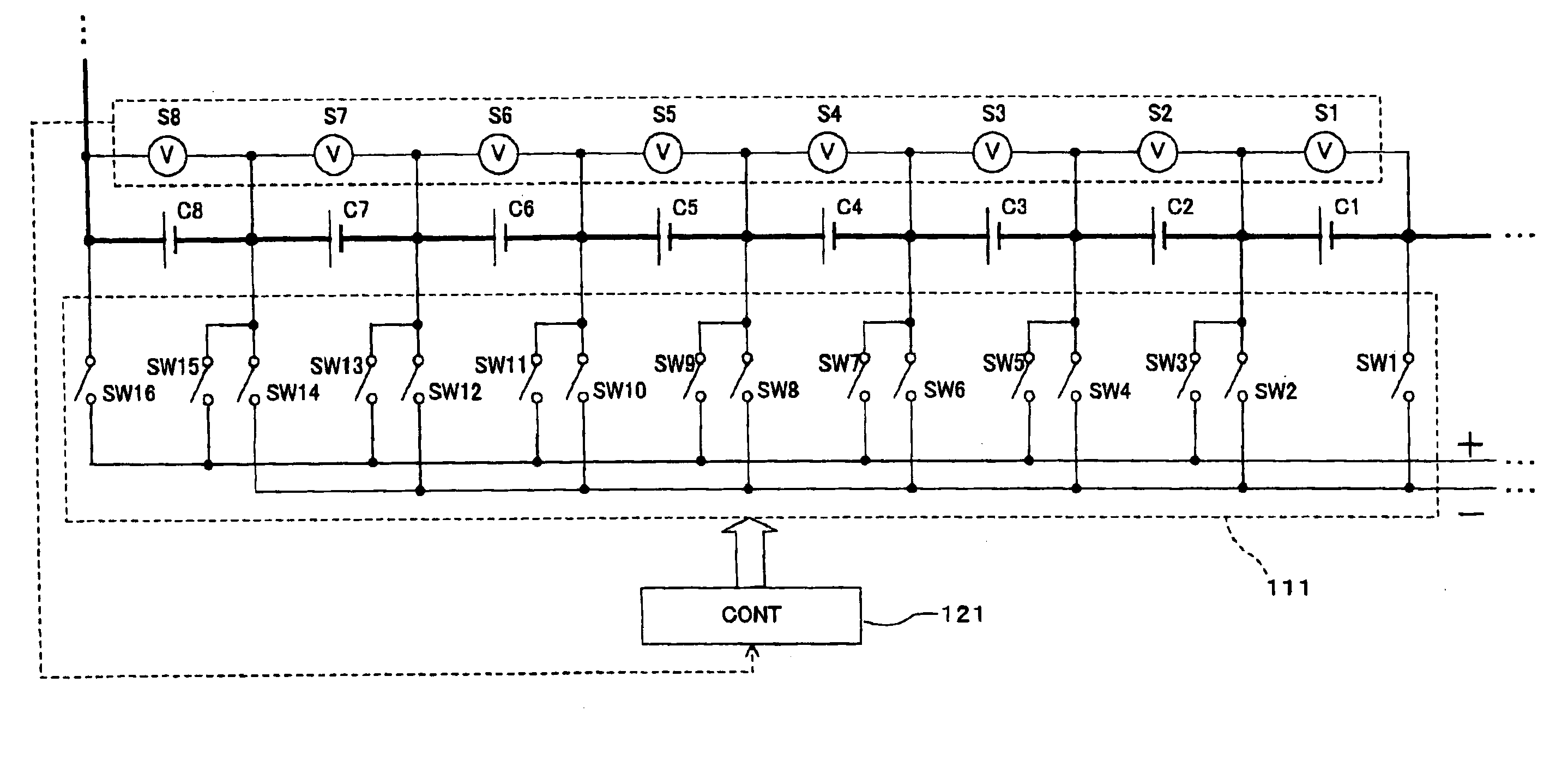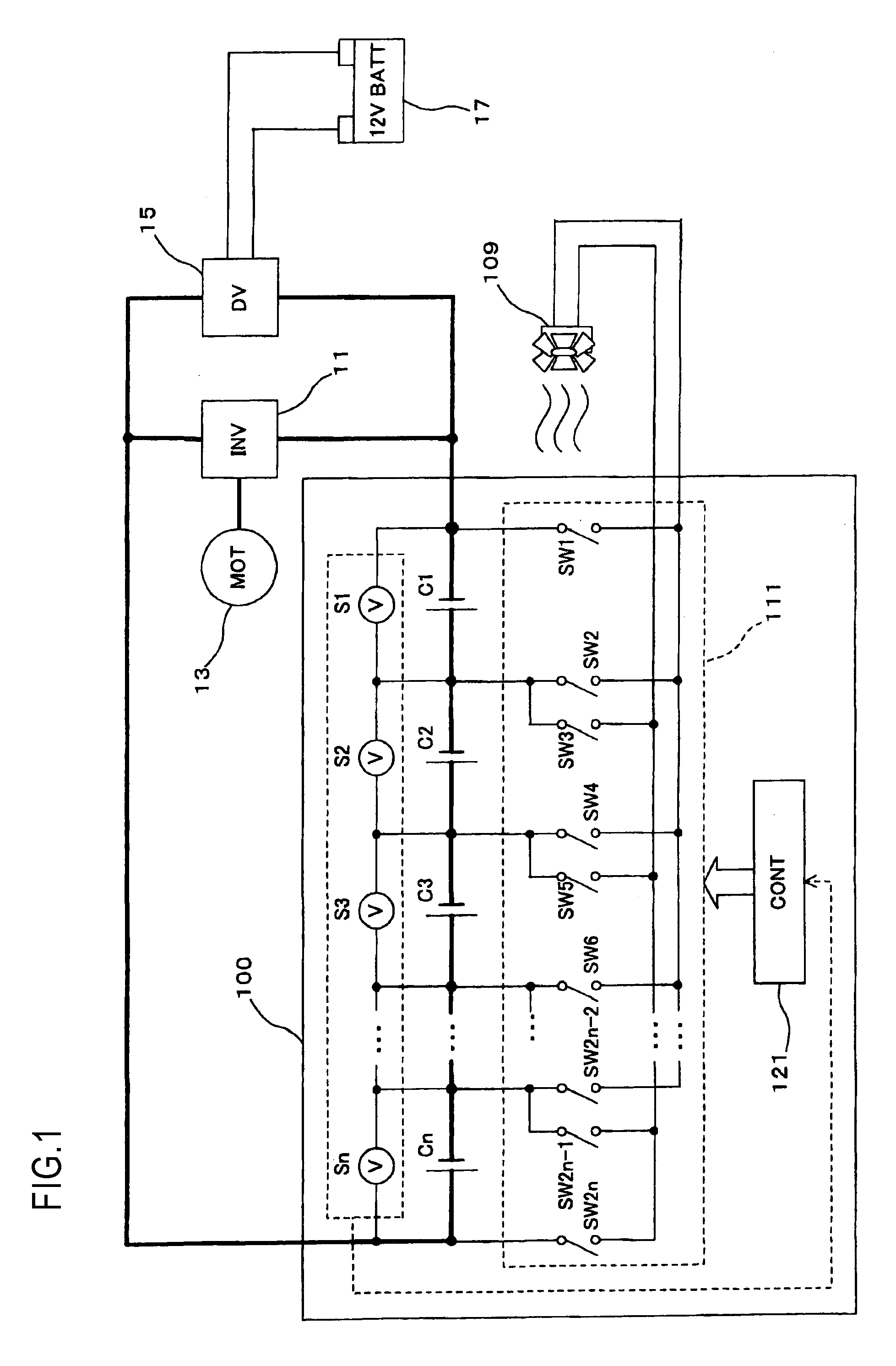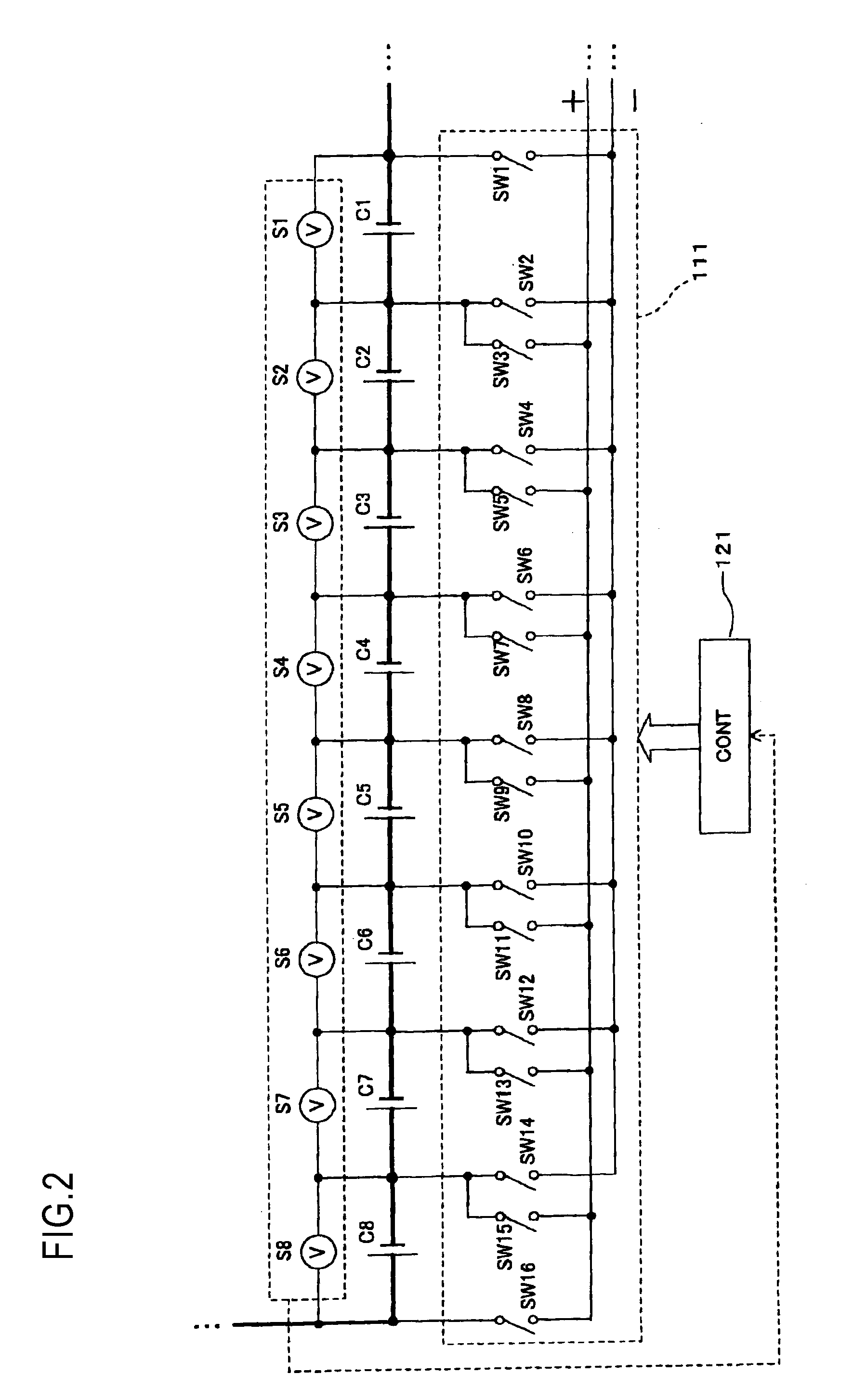Discharge controller
a discharge controller and discharge voltage technology, applied in the direction of battery/fuel cell control arrangement, instruments, electrochemical generators, etc., can solve the problem of prolonging the time required for the equalization of the cell voltage of the cell
- Summary
- Abstract
- Description
- Claims
- Application Information
AI Technical Summary
Benefits of technology
Problems solved by technology
Method used
Image
Examples
first embodiment
[0065]FIG. 1 is a block diagram showing a relationship between a multiple cell battery of a first embodiment installed in a vehicle, a part of an electric drive system, and accessories. The vehicle shown in FIG. 1 is equipped with a multiple cell battery 100 of the first embodiment, the inverter 11, the motor 13, the DC-DC converter 15, the battery 17, and an electric motor 109 for a cooling fan as a rotary inductive load (referred to as an “electric motor” hereinafter). The inverter 11, the motor 13, the DC-DC converter 15, and the battery 17 are the same as the constituent elements shown FIG. 23.
[0066]An output voltage of the multiple cell battery 100 of the first embodiment is a high voltage (e.g., 100 to 200 V), and an output voltage of the battery 17 is a voltage for the accessories (e.g., low voltage of 12V). The output voltage of the multiple cell battery 100 is converted from DC to AC by the inverter 11, and then is fed to the motor 13. Also, the output voltage of the multip...
second embodiment
[0107]In the first embodiment, the discharge path is formed from at least one cell of the series-connected cells to the electric motor 109 for the cooling fan as the rotary inductive load, by the ON / OFF-control of the switches SW1 to SW2n of the control unit 121. In a second embodiment, the discharge path is formed from one cell whose cell voltage is highest among the cells installed into the multiple cell battery 100 to the electric motor 109. A relationship between the multiple cell battery, a part of the electric drive system, and the accessories in the second embodiment is substantially similar to that shown in FIG. 1 in the first embodiment. But the control unit provided to the multiple cell battery in the second embodiment performs the ON / OFF-control of the switches SW1 to SW2n, which is different from the control unit 121 in the first embodiment.
[0108]The discharge control performed by the control unit in the second embodiment will be described with FIG. 15 and FIGS. 16A to 1...
third embodiment
[0114]A third embodiment is common to the second embodiment in that the discharge path is formed from one cell whose cell voltage is highest among the cells installed into the multiple cell battery 100 to the electric motor 109. But the timing at which the discharge path is switched is different from that in the second embodiment. In other words, in the second embodiment, the discharge is carried out until the cell voltage of the cell from which an electric power is discharged becomes equal to the cell voltage of the cell whose cell voltage is lowest in the multiple cell battery. In contrast, in the third embodiment, the discharge is carried out until the cell voltage of the cell from which an electric power is discharged becomes equal to a voltage that is obtained by subtracting a given voltage from the cell voltage of the cell whose cell voltage is second highest in the multiple cell battery.
[0115]A relationship between the multiple cell battery, a part of the electric drive syste...
PUM
 Login to View More
Login to View More Abstract
Description
Claims
Application Information
 Login to View More
Login to View More - R&D
- Intellectual Property
- Life Sciences
- Materials
- Tech Scout
- Unparalleled Data Quality
- Higher Quality Content
- 60% Fewer Hallucinations
Browse by: Latest US Patents, China's latest patents, Technical Efficacy Thesaurus, Application Domain, Technology Topic, Popular Technical Reports.
© 2025 PatSnap. All rights reserved.Legal|Privacy policy|Modern Slavery Act Transparency Statement|Sitemap|About US| Contact US: help@patsnap.com



